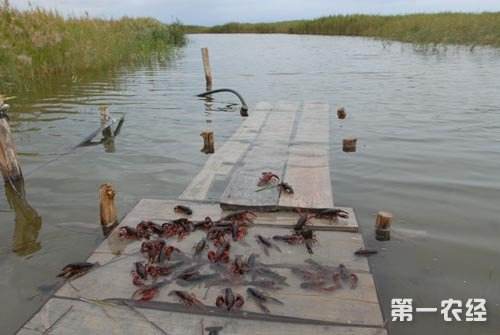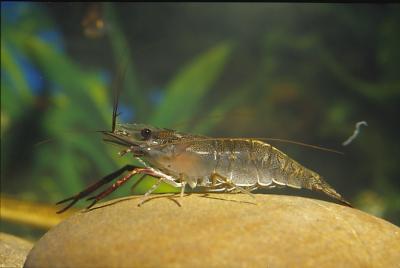How do shrimp farmers get out of the misunderstanding of dissolved oxygen management in shrimp ponds?
Pond dissolved oxygen is the lifeline of aquaculture. The feeding and growth of fish and shrimp, the regulation of water quality and the maintenance of sediment are all closely related to the management of dissolved oxygen. The management level of dissolved oxygen is directly related to the feed coefficient, the stability of water quality and sediment, the idea of disease control and the implementation plan.
There are several sources of dissolved oxygen in the pond, one is algae photosynthesis, the other is aerator stirring air, and the third is pure oxygen dissolved through microporous tubes. Different pond conditions, different culture patterns and different culture density have their own emphasis on the ways and preferences. This paper focuses on the management of dissolved oxygen in shrimp ponds.

Shrimp ponds are divided into two types: high-level ponds and earthen ponds. The high pond was originally defined as a hard-bottomed pond higher than the coastline. According to the current development and changes, the author believes that it should be in line with a more appropriate definition: a running-water aquaculture pond that facilitates sewage collection and discharge and isolation of virus vectors. The oxygen enrichment equipment of the high-level pool is above 1.5KW, and the power is sufficient. The problem is the current use and management, which is open to question. And the earthen pond, as its name implies, is a pond at the bottom of the mud. The aerobic facilities of this kind of ponds are between 0.5 and 1.5KW. The author believes that according to the current shrimp culture demand, it is far from enough, power is not enough, let alone good management. Suitable soil pond aeration should be the same as that of high-level pond, or even higher (because there is no sewage collection and discharge), that is, 1.5-3KW/ mu.
At present, we raise Penaeus vannamei, fast seedlings account for the vast majority, shrimp grow fast, naturally need more nutrients (bait, oxygen, minerals, Victoria, etc.), the environment is cleaner. Therefore, the satisfaction of dissolved oxygen, we can not only meet the needs of shrimp, not only shrimp does not lack oxygen, but more to meet the needs of algae and bacteria in the whole pond, especially the bacteria at the bottom of the pond; this, just as we talked about the aeration of fish ponds-- fish pond aerator can not be located in the "life-saving machine", but should be located in the "yield-increasing machine".
Speaking of this, many people will resent it. Everyone knows that the more oxygen is added, the better. The question is: money, money, money? Cost is an obstacle in front of everyone, just like a hurdle that cannot be bypassed. Let's calm down and think about it. What is the biggest problem with prawns at present? Disease! Yes, disease is the biggest cost. What about the cost of medication, water exchange and high feed coefficient derived from incidental diseases? We haven't calculated yet.
At present, the aeration cost of shrimp is generally about 1 yuan per jin of shrimp. If I increase this cost to 2 yuan, or even 3 yuan, how much impact will this have on our total cost? According to the current shrimp prices, it is still negligible. It is understood that the cost of increasing oxygen in many high-level farms in Southeast Asia is more than 2 yuan.
And our drug cost, now is rarely less than 1, or even 2 (high density high pool), feed cost is high 1 is normal, and disease caused by early sale of shrimp, this cost can be 10-20 yuan. If we increase the investment of 1-2 yuan in the area of increasing oxygen, can we reduce a lot of other costs? The math problem is not difficult.
Speaking of which, is it true that people are not so disgusted with the investment in increasing oxygen? Let's continue... ..
Current management of aerator in shrimp ponds
The main results are as follows: 1. In the process of shrimp culture, the early shrimp is small, the bait is less, the organic matter is less, the oxygen consumption is less, the shrimp becomes larger and larger in the middle and later stage, the feeding is more and more every day, and the oxygen-consuming organic matter such as feces and residual bait increases gradually. Most people like it, not open in the early stage, and then slowly add one in the middle and later stage. This can not only meet the needs of shrimp, but also save electricity.
2. Many shrimp farmers like to stop the machine for feeding, for fear that the shrimp can not find the material, or that the material will be buried by sludge, or that it will be swept into the sewage collection area.
It seems that there is some truth in the above two points. But the author believes that this is all wrong. Let's analyze it together:
1. Water is stratified. As soon as the aerator stops, the water is quickly delaminated, the deeper the water, the lower the dissolved oxygen, and there is almost no dissolved oxygen at the bottom of the pond. Frequent shutdown is to make the pond bottom often anoxic, and frequent hypoxia will make the pond bottom aging and produce a large number of toxic substances such as ammonia nitrogen, sub-state nitrogen, hydrogen sulfide, indole, aldehydes and phenols, which is why in case of strong wind and heavy rain (reverse bottom), shrimp diseases occur, this is the reason.
two。 High dissolved oxygen is harmful. After shutdown, the water is stratified, the algae are concentrated in the upper water, the photosynthesis of the upper water is high in dissolved oxygen, and the dissolved oxygen increases sharply in a short time, which will inevitably lead to bubble disease. This is why the sunny day after the wind and rain is also the peak of the disease of fish and shrimp (especially seedlings).
3. Shrimp is benthic. In the middle and later period, there was a lot of organic matter at the bottom of the pond, which was fed after the shutdown, resulting in the anaerobic bottom of the bottom. in the process of looking for feed, the shrimp kept climbing the bottom of the pond (forming a reverse bottom) to release toxic substances. Shrimp have been eating in a low-oxygen and toxic environment, even if they find feed, they are not in the mood to eat, even if they eat, they will not grow up quickly.
Speaking of which, do you like the investment in increasing oxygen a bit?
- Prev

If you want to double the output of freshwater shrimp, remember to feed it like this.
If you want to double the output of freshwater shrimp, remember to feed it like this.
- Next

Technical points of feeding and Management of Dairy cows in Winter
Technical points of feeding and Management of Dairy cows in Winter
Related
- On the eggshell is a badge full of pride. British Poultry Egg Market and Consumer observation
- British study: 72% of Britons are willing to buy native eggs raised by insects
- Guidelines for friendly egg production revised the increase of space in chicken sheds can not be forced to change feathers and lay eggs.
- Risk of delay in customs clearance Australia suspends lobster exports to China
- Pig semen-the Vector of virus Transmission (4)
- Pig semen-the Vector of virus Transmission (3)
- Five common causes of difficult control of classical swine fever in clinic and their countermeasures
- Foot-and-mouth disease is the most effective way to prevent it!
- PED is the number one killer of piglets and has to be guarded against in autumn and winter.
- What is "yellow fat pig"? Have you ever heard the pig collector talk about "yellow fat pig"?

